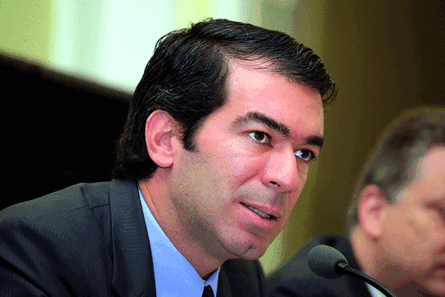By all accounts it has been a challenging 12 months for Brazilian carrier Gol and chief executive Constantino de Oliveira Junior.
Exactly a year ago Oliveira was touring Europe to promote a slate of new routes being launched by its new subsidiary VRG as part of an ambitious plan to revive the legendary Varig brand. But in a drastic change of events, Oliveira in January began cutting some of the new European routes, saying they were not sustainable. Oliveira ended up spending most of the first half of 2008 cutting long-haul flights and in June the last of the six routes that were made possible by Gol's 2007 acquisition of VRG was wiped off the map.
In October Oliveira decided to pull the plug on all VRG domestic flying, leaving it with only three medium-haul international routes within South America.
The group has now announced a third-quarter consolidated net loss of 294 million real, although net revenue increased 37% to 1.8 billion real.
Despite all the setbacks, Oliveira says he is not second-guessing Gol's decision to buy the remnants of the ailing flag carrier. He also says that after several strategy shifts this year, he is confident the new Gol strategy, focusing exclusively on the Gol brand domestically and leaving the long-haul market to others, will position the carrier better for 2009.
 |
|---|
©Gol |
"We've gained a lot," Oliveira says of the acquisition. "We can count on a highly trained and customer service-oriented team. We've gained the know-how of Brazil's most experienced airline. We've also extended the Smiles mileage program - the largest in Latin America, with over 5.9 million members - to Gol. In addition, we now occupy even more space in the country's major airports."
Oliveira adds the decision to cut almost the entire VRG network, which uses the Varig brand, was "a tough but responsible decision. The constant increase in fuel prices, the lack of next generation aircraft available in the market - which compromised our competitiveness, both in costs and the quality of services offered - and the impact of lower than expected economic growth ratings in the US and Europe were the basis for repositioning VRG's international route network. We believe those actions were necessary to maintain the company's continued success and sustainability."
Oliveira says it makes sense to hang onto the Varig brand for only three routes rather than stop using it altogether because it is still "highly regarded" internationally. While Gol and VRG formally became one carrier in October and the two are now operating under a single certificate, the company has decided there is value to continue using the Varig brand in the Bogota, Caracas and Santiago markets. Oliveira says the passengers on these flights "are predominantly business travellers and prefer more complete service - a 'Varig' characteristic."
A second class, branded as comfort, is now offered alongside economy on the three Varig-branded routes as well as on flights to Buenos Aires. But the entire domestic network is now all-economy. Gol for a year used VRG to operate alongside it on business routes, offering an up-market service compared to the no frills Gol but in the end Oliveira decided having two separate brands domestically was not a viable strategy.
Oliveira, however, still has long-term ambitions for the Varig brand internationally andis not yet ready to confine the once proud brand to the history books. "We plan to use this brand on our longer flights in South America and are working to strengthen it, so that, in the future, we may be able to resume Varig's long-haul operations in a more structured and competitive way."
SLOWING GROWTH
Meanwhile, Oliveira has decided to slow domestic capacity growth. Oliveira says Gol will only expand domestic capacity by 4% next year, compared to 9% this year and previous 2009 projections of 7% to 8%. "We believe that it is below market growth and we expect that to help us recover load factors. We believe that 2009 will be a challenging year for air transportation in Brazil, due to the worldwide economic environment. But with the changes we recently made in the company - network integration, merging our subsidiaries into one airline, extending the Smiles program to all the company's flights, and onboard service enhancement - we believe that we are in a very good position to compete in the domestic market."
Gol faces intense competition from TAM, which now has a leading 53% share of the domestic market and plans to add 8% domestic capacity next year. It will also have to fend off a new competitor next year in Azul, a new low-cost carrier being established by JetBlue founder David Neeleman. But Oliveira is confident Gol is again in a good position and says it is "ready to compete" against Azul.
"The Gol brand serves 49 destinations in Brazil. That's more than any other Brazilian airline. We have a strong brand, a new, enhanced product, and we believe the new network will improve load factor levels by allowing the company to increase offerings in markets where it has consolidated operations while also allowing for new connections between previously unlinked cities," he says.
While Gol is far from repeating its performance of 2004 and 2005, when its net margin exceeded an incredible 19%, Oliveira says the company still operates "with the same fundamentals we had in 2001, when the company was launched. The fundamentals of our low cost operations are sustained by the pillars of our business strategy: high aircraft utilisation, the intelligent use of technology, a modern and standardized fleet, a focus on Internet sales and a paperless ticketing system. Today, however, we are larger and more solid, ready to compete and face the challenges the industry is facing."
Source: Airline Business



















